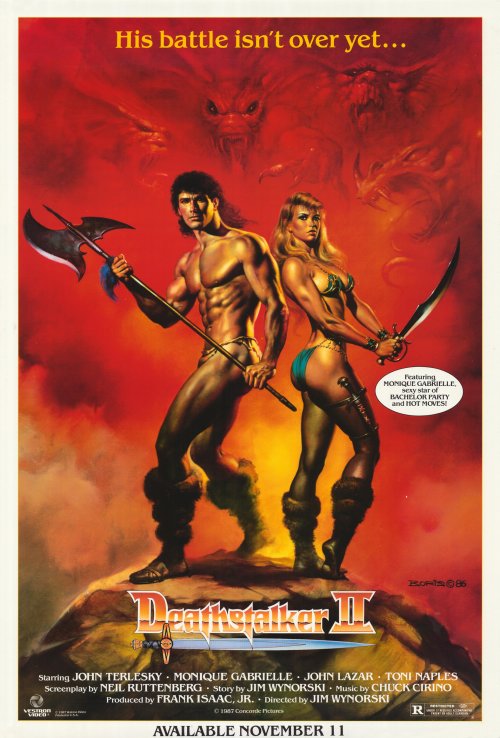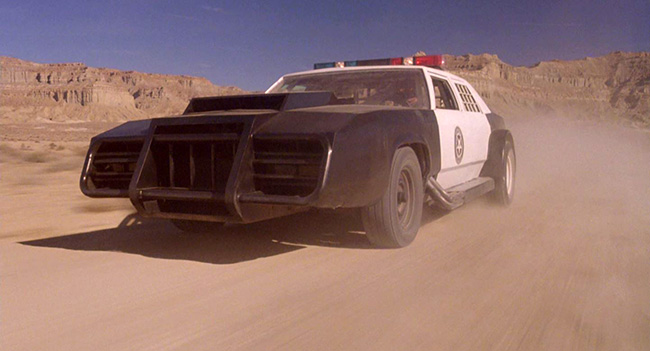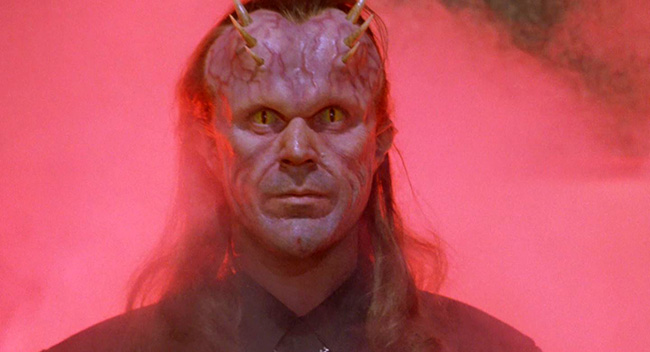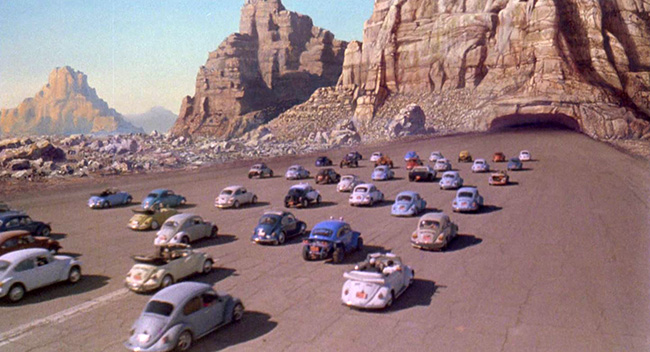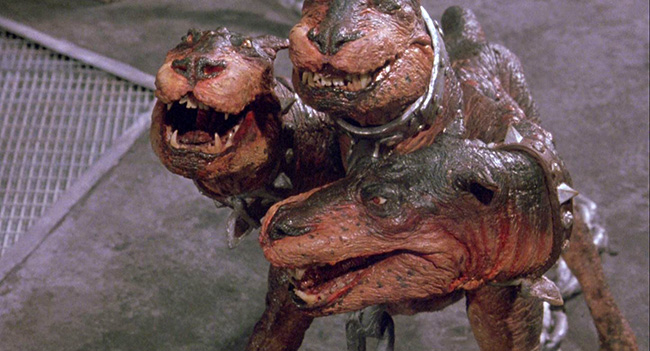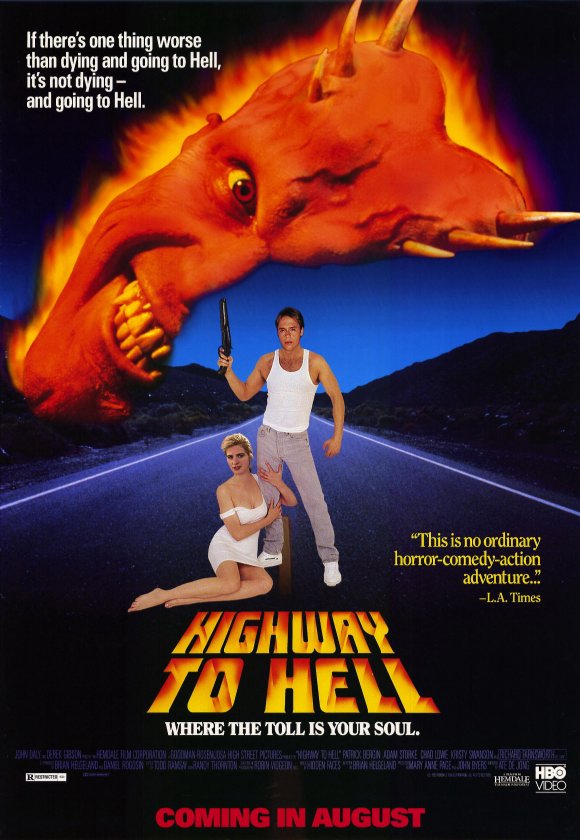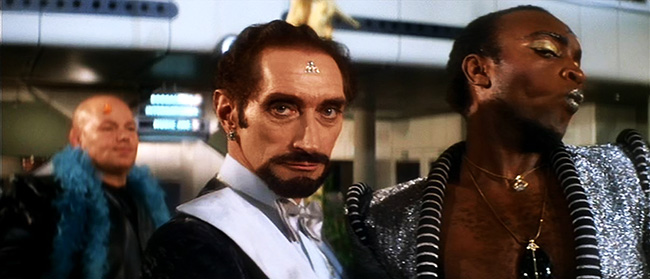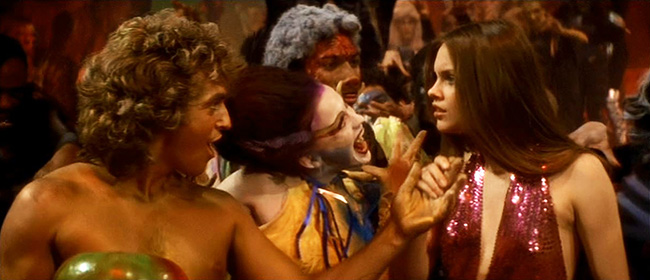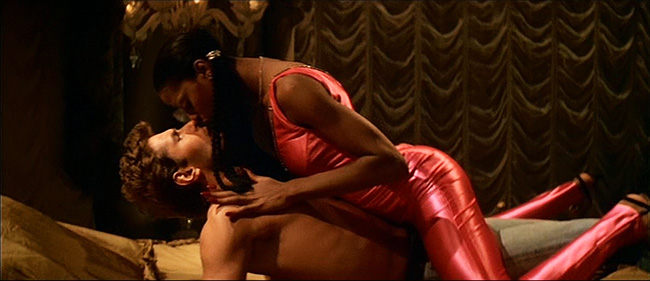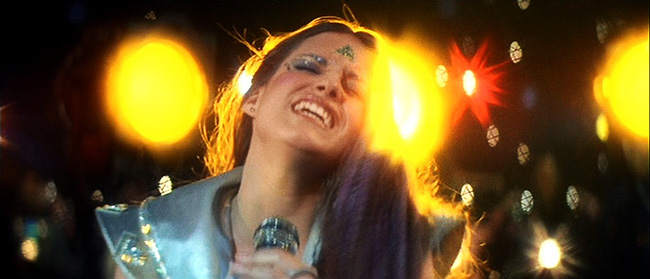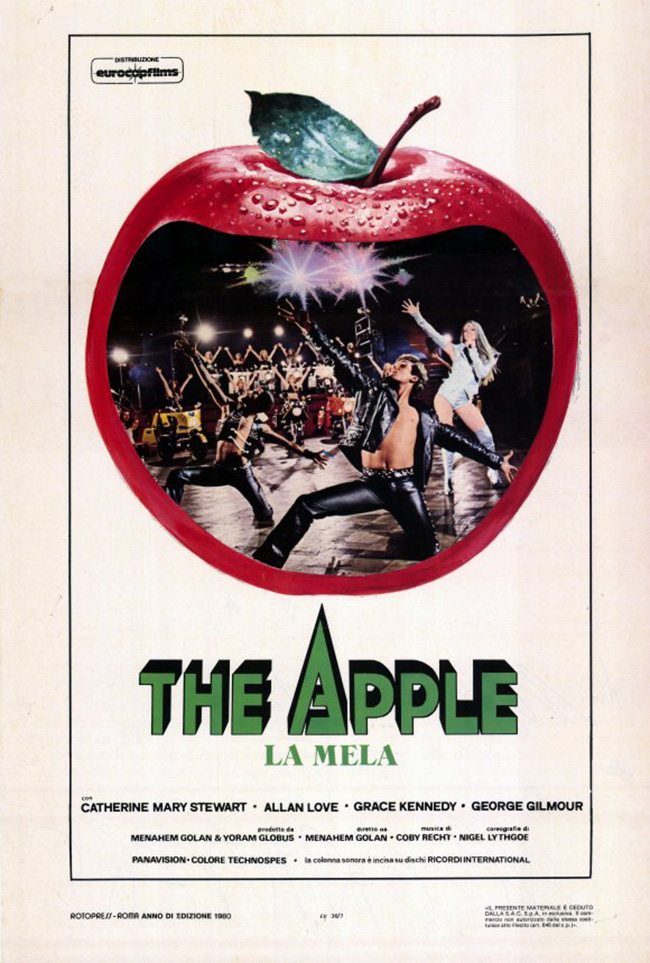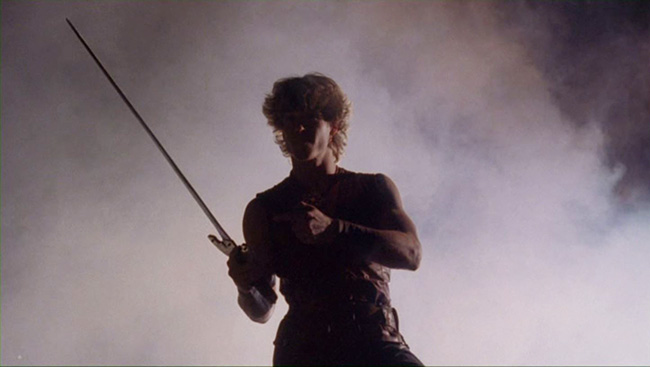
The Deathstalker movies, from the Roger Corman factory, tend to get lumped together. It’s understandable. They’re the prototypical 80’s Conan the Barbarian rip-offs, sword and sorcery with southern California accents and fabulous 80’s hair, cheap special effects, loincloths and cavegirl bikinis, and, of course, sex. Every video store carried the Deathstalker movies, the oiled-up muscles and thongs of the Boris Vallejo poster art promising pulp paperback fun (and grossly misrepresenting the quality of the actual films). The first film is the most vividly lurid, and pure exploitation. The third in the series, Deathstalker and the Warriors from Hell (1988), is now available on DVD – as an episode of Mystery Science Theater 3000. (“Oh no,” Crow T. Robot laments, “it’s a sequel to somethin’!”) The dull, Renaissance Festival-flavored movie deserves the roasting it gets. I haven’t seen the fourth and last film, Deathstalker IV: Match of the Titans (1991), so I won’t comment on it; but today’s Midnight Only entry is a guilty confession: I really, really like Deathstalker II (1987). Hear me out.
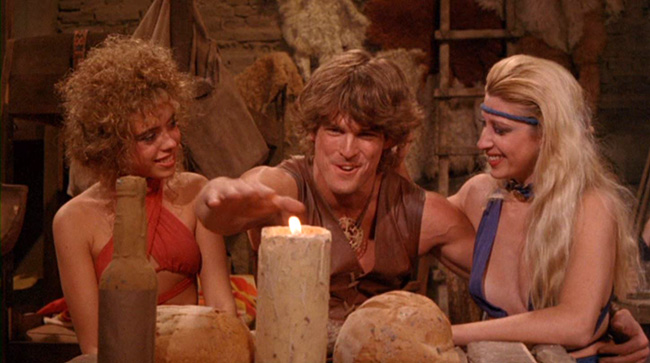
Deathstalker (John Terlesky) shows off to some tavern wenches by passing his hand through a flame. They’re impressed.
The film is directed by Jim Wynorski, Corman’s faithful soldier of cheese and cheesecake. I kind of see this as the middle film of a trilogy, you see. The previous year Wynorski directed the 80’s classic Chopping Mall (1986), about mall security robots that go on a rampage. After Deathstalker II, Wynorski would remake Not of This Earth (1988) with Traci Lords. These three films would help any film student piece together an auteur theory about Wynorski (and I am sure that theory would involve bare breasts), but they’re also entertaining and funny, in ways both intentional and un-. Granted, the wit is in a certain…style. Especially in Deathstalker II, the wisecracking is likely to elicit groans, but the dumb jokes are so frequent, and the camp so all-encompassing, that it’s easy to just give in to the spirit of the movie. Clearly everyone is having fun. John Terlesky (Chopping Mall) is this film’s Deathstalker (the lead rotates from movie to movie), and he’s a good fit for the role, delivering the wisecracks naturally while looking good with his shirt off. Sample dialogue: “Looks like he died with a gag in his mouth.” “Yeah, well if he did, it doesn’t look like he got a chance to tell it.” Terlesky, who is now a prolific TV director, has a bit of Bruce Campbell’s lantern jaw, which may be one of the many reasons this film reminds me of Army of Darkness (1992) – admittedly, an inferior dry run. 80’s and 90’s bombshell Monique Gabrielle (Amazon Women on the Moon) is at her most appealing in this film, playing a dual role as Reena the Seer, actually a deposed princess in hiding who enlists Deathstalker’s help, and her evil doppelgänger. At one point late in the film, Deathstalker is caught in bed with her double. After she knocks her twin unconscious, Deathstalker says, “It’s her looks that got to me.” Her jealousy immediately fades: “Oh, in that case…” Other villains include a swordswoman in a chain mail bikini, Sultana (Toni Naples, Sorority House Massacre II), and Beyond the Valley of the Dolls‘ Z-Man, John Lazar, as the sorcerer Jarek. Surprisingly, the climactic swordfight between Deathstalker and Z-Man – that is, Jarek – is pretty well choreographed, a rarity in VHS-ready movies like these.
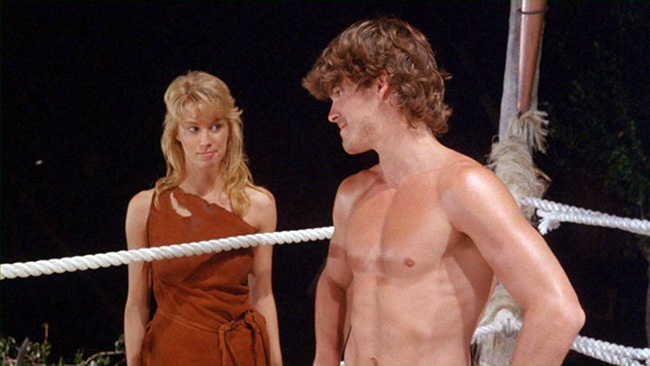
Reena (Monique Gabrielle) watches as Deathstalker prepares for a wrestling match with an Amazon.
This is a movie in which our shirtless hero finds himself in an Amazon wrestling ring in the woods, tangling with an enormous female wrestler called Gorgo, played by a woman named Queen Kong. “That’s a nice outfit,” Deathstalker says. “Do you have to buy your clothes at a special store, or–?” (She punches him in the face.) This is a movie in which Deathstalker is trapped in a room with an advancing wall of spikes, intercut with Reena fighting off zombies in a foggy graveyard. This is a movie which features outtakes during its ending credits (worth sitting through, I have to say). This is a movie in which one of the characters actually mentions Conan, just to wink at the audience. There’s also a reference to Lemuria, the mythical lost continent and home of Kull the Conqueror. At one point Reena asks Deathstalker if that’s his first or last name. She never gets a satisfactory answer, so she persists in calling him “Stalker” for the entire movie. “Stalker! Stalkerrrr!” This is more than a little weird.
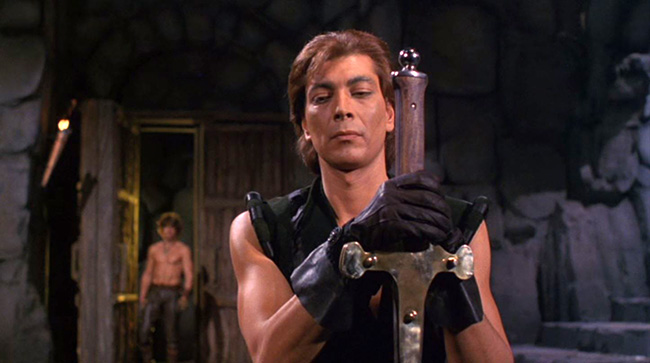
John Lazar as Jarek.
When our heroes first enter that graveyard, there’s more dialogue exchanged that I enjoy more than I probably should:
“Wait, I just forgot. I left the door to my hut unlocked.”
“You don’t have a door.”
[A crypt door squeals open in the distance.]
“What was that?”
“The wind.”
“It should get oiled.”
Some more dialogue.
Deathstalker, to Reena: “Don’t worry, you have to get up pretty early in the morning to trick the prince of thieves.”
[An arrow plants itself next to his head.]
Reena: “It is pretty early in the morning!”
Again, this movie is a guilty pleasure. But, you know, the sets don’t fall over, and I didn’t spot any cars driving by in the distance, or wristwatches under the gauntlets. Deathstalker II checks every box: it contains the appropriate amount of sorcery and swords, along with a few snout-nosed beast-guards, topless women dancing in a tavern while pipe music plays, explosions, a gory death for our villain, and a big sex scene with Gabrielle. Where other movies of this direct-to-video subgenre tend to lag after the first forty-five minutes or so, Wynorski finds a rhythm, and somehow this thoroughly unnecessary sequel becomes more fun as it goes along. The film is available in Shout! Factory’s 2-disc Sword and Sorcery Collection, which also includes Deathstalker, The Warrior and the Sorceress (1984), and Barbarian Queen (1985). Strap on your loincloth, tip the wench, and enjoy Deathstalker II with an overflowing flagon of beer.
